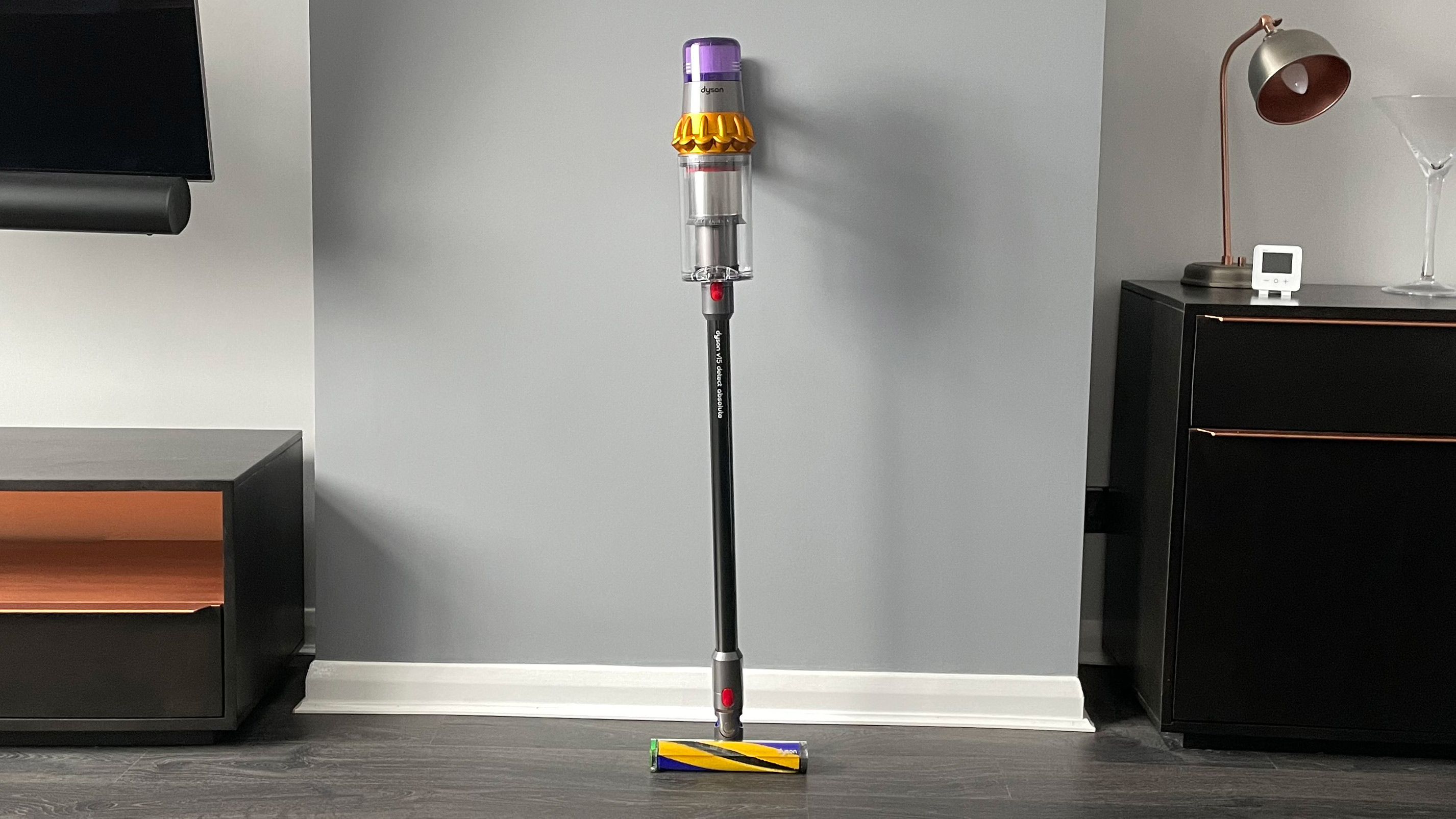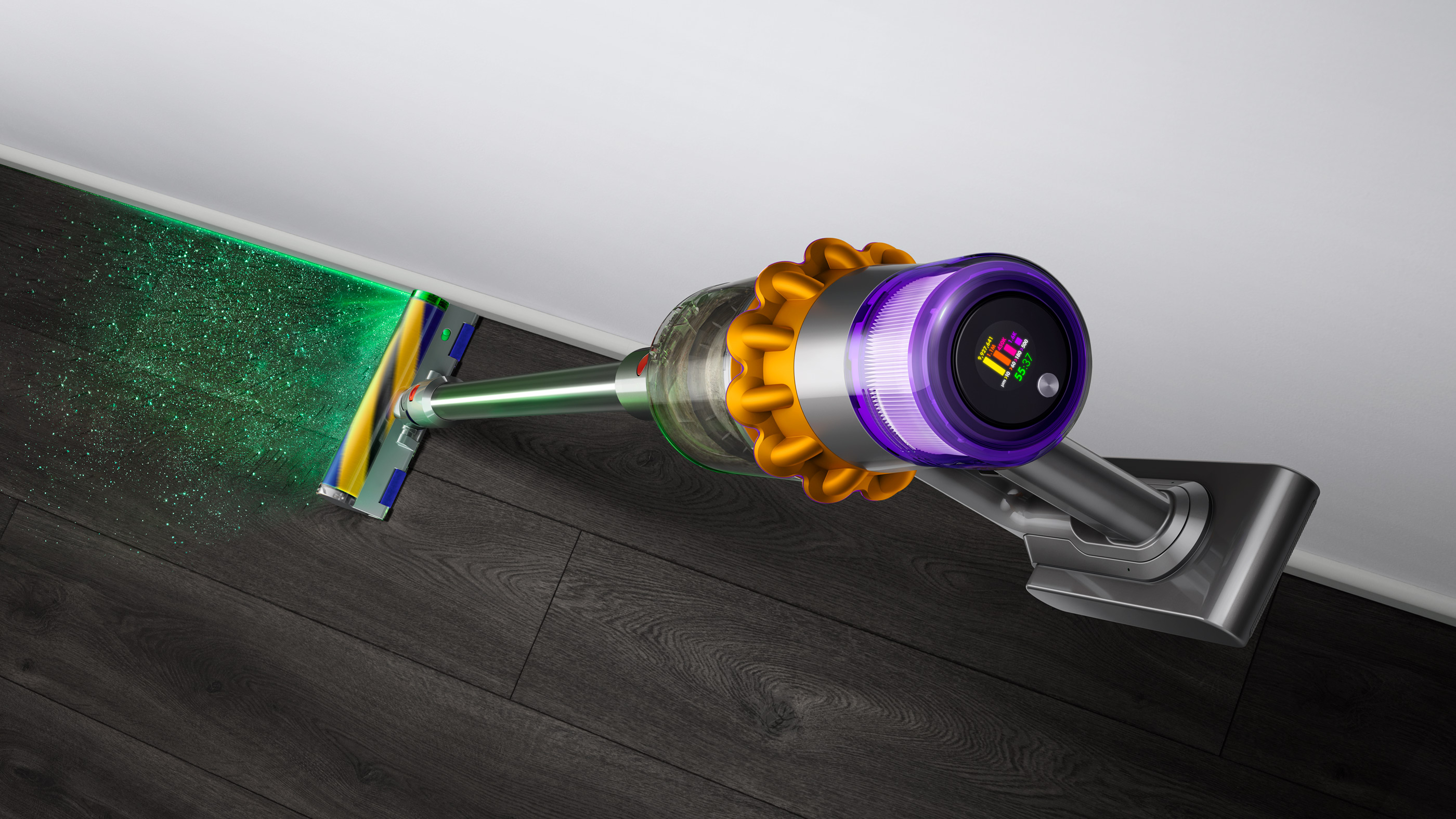I tried a cordless vacuum with 2 batteries, but it didn't speed up my cleaning
Cordless vacuums with two batteries are a great idea, so long as you plan head

Cutting the cord and being free to roam around all levels of the house is one of the main reasons to buy one of the best cordless vacuums. We're big fans of this type of vacuum cleaner, not only because we don't like to be held back, but also because we love how versatile, lightweight and easy-to-use they are.
Just FYI, if you're looking to buy a cordless vacuum cleaner then now might be the ideal time to start shopping around. Black Friday deals are a matter of weeks away, and we expect to see some fab Black Friday vacuum deals to roll out soon. You might even see some Black Friday Dyson vacuum deals, if you're willing to splurge. For more affordable options, we also anticipate a lot of Black Friday Shark vacuum deals. Both these brands have highly sought after cordless vacuum cleaners which would be worth keeping an eye on.
While cordless vacuum cleaners are great, one of the key things we test - and one of the first things we look at in all the vac spec - is the runtime. The runtime is how long the battery will last before it needs another charge. There's nothing more annoying than a vacuum cleaner stopping dead while you're in the middle of vacuuming the carpets upstairs, or when you've almost finished banishing the crumbs to the dust canister in the car which is parked down the road. These are trivial problems compared to some, of course, but when a vacuum that isn't tethered to the mains power dies on you during a cleaning mission, it is a problem all the same.
There are some vacuum cleaning brands which sell separate batteries, meaning that you can buy an additional battery and give yourself double the available power. Some even include a spare battery as standard, effectively turning a 60-minute runtime into 120 minutes.
This sounds like a dream: an answer to a vacuum cleaning woe. But what's the reality of this? Well, let me share…
Oh, the cordless vacuum cleaner. They come in very different shapes, sizes and colors, with some being far more technical than other simpler, yet just as effective, models. Those with the more premium price tag generally come with more features, which makes sense, and some have more battery power and / or more battery options.
Take the Dyson V15 Detect, for example. There's a lot going on with it, as we found out when testing it for our Dyson V15 Detect review. For instance, it has a High-Torque cleaning head, that when used on Auto Mode will adjust the power to suit the type of floor you’re cleaning; clever. It also has a Laser Slim Fluffy cleaner head, which has a soft brush bar to ensure hard floors aren’t damaged. What's more, it features a class 1 laser diode (so it’s safe for humans and pets) mounted at an angle of 1.5 degrees and 7.2mm off the ground, which projects a beam of green light in front of the cleaning head to highlight microscopic dust particles. There's also a color LCD display, which shows level of dust collected and remaining runtime.
In short, it's a feature-packed device - and therefore one that needs a lot of power. Dyson claims that the battery will last up to 60 minutes on the lowest-power, Eco, setting, and that's what we found in our testing: it keep going for 59 minutes before it needed recharging.
Sign up for breaking news, reviews, opinion, top tech deals, and more.
While 60 minutes might sound like a lot, some people might need more. And though the battery can be swapped out to double your runtime, that will cost you extra - making an already eye-wateringly expensive vacuum cleaner even pricier.
Of course, if you do end up getting a second battery, you'll then need to ensure that you keep it charged up at all times, so that you can quickly swap it out if the vac dies mid-cleaning. You'll also need to figure out how to take the depleted battery out and replace it with the new battery. This may or may not be a massive issue for you, but it's always worth doing some prep.

I've also been testing the Miele Triflex HX2 Pro cordless vacuum cleaner recently. This has a slightly lower spec than the Dyson above, but is a really robust, versatile and powerful model which deals expertly with any small debris in its path.
Unlike the Dyson, this comes with two batteries as standard. Miele claims that each one provides a 60-minute runtime, so two batteries will obviously give you 120 minutes. This sounds mega, and if you don't compare the Miele HX2 range beforehand, you'll probably feel like you're getting a good deal.

However, it's not quite as simple as that. In a nutshell, you're paying an extra £200 for this extra battery when compared to the Miele HX2 Cat&Dog, which has only one but which is cheaper by that amount. You may find that's a reasonable compromise, because you won't need to find and buy an additional battery.
I found that on the HX2 Pro I didn't achieve anywhere close to the 60-minute runtime when flicking between the 'Eco' and 'Max' settings; I was lucky to get 35 minutes in that case. You'll be closer to reaching the max runtime on the 'Min' setting, but that won't be much help if you have some real heavy-duty cleaning to do.
That's where the second battery could come in handy, then, but unfortunately when I came to swap to the new one, I found that it wasn't charged; not ideal, because it meant that I needed to reschedule the vacuum cleaning chore until that was done.
And don't go thinking that's a quick process, either. The Miele HX2 models typically need 4hrs to juice up; the Dyson V15 Detect takes 5hrs. If you find out the second battery is flat mid-clean, as I do, you're in for a lengthy wait.
Of course that's just user error on my part, but it's something to be aware of if you want to see the benefit of the dual-battery vacuum cleaner approach. It's a great option in theory, but you'll need to plan ahead - and have deep pockets - to make it worthwhile.

Jennifer (Jenny) is currently the editor of Top Ten Reviews, but prior to that, she was TechRadar's Homes Editor. She has over a decade of experience as a digital product writer specialising in appliances, smart tech and mattresses for some of the UK's leading retailers and magazine titles such as Real Homes, Ideal Home and Livingetc. Generally, you’ll find her watching the latest Netflix series, digging around in the garden or attempting to make a cake that is edible.